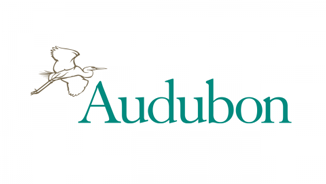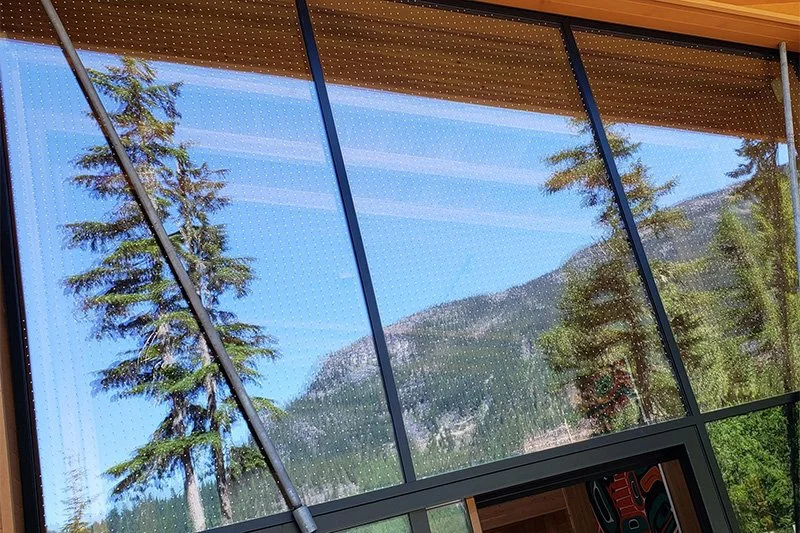
Posted April 22nd 2022
5 Things to Consider for any Bird Collision Mitigation Project
Approximately 1 billion birds are lost in North America due to glass collisions every year. Unfortunately, this number will continue to rise unless we start making urban developments that consider wildlife species. Prevention is vital, as birds that succumb to this issue include healthy breeding pairs, nestlings whose survival depends on parents' care and protection, and a variety of species-at-risk.
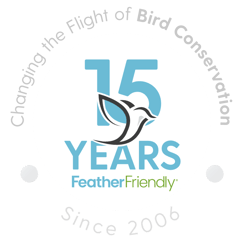
But before you begin your bird collision mitigation project, there are some noteworthy and valuable things to know:
Five Key Things to Consider for any Successful Bird Collision Mitigation Project
1. A Reflective Surfaces
About: The most common collision problem for birds. The surrounding habitat is reflected off the outside surface of the glass, acting like a mirror and tricking the bird into thinking it can fly safely into the illusion.
Solution: Applying standardized markers/patterns to the outside surface of the glass will break up the reflection, interrupting the illusionary effect. Note: Applying treatments on any surface other than the external surface (also called 1st surface) is substantially less effective. This is because rays from the sun will hit the glass at angles that make interior treatments invisible throughout large portions of the day.
Why This Works: The bird no longer perceives the space as an open and safe fly-zone. It can now distinguish there is a barrier to the flight path.
Problem: Reflective Surfaces
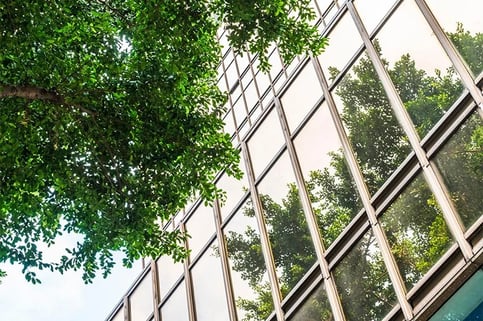
Solution: Prevention Markers (Feather Friendly® Symmetry Pattern in Light Grey)
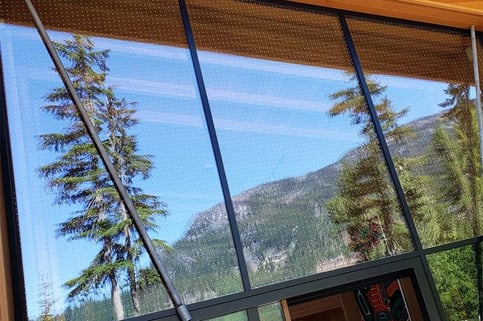
About: Fly-through zones include glass skywalks and linkways that connect two buildings and clear glass railings. Unlike reflection, fly-through zones show habitat that really does exist on the other side of the glass. The bird does not realize the physical barrier that separates it from the area that lies beyond.
Solution: Applying standardized markers/patterns to the glass will interrupt the transparency. When the issue is more prominent transparency, we recommend applying black markers, which can be installed on the more accessible side of the glass.
Why This Works: The bird no longer perceives the space as an open and safe fly zone. It can now distinguish there is a barrier to the flight path. Black markers, in this instance, also offer a better colour contrast (see below for more on contrast).
Problem: Transparent and Fly-Through Zones
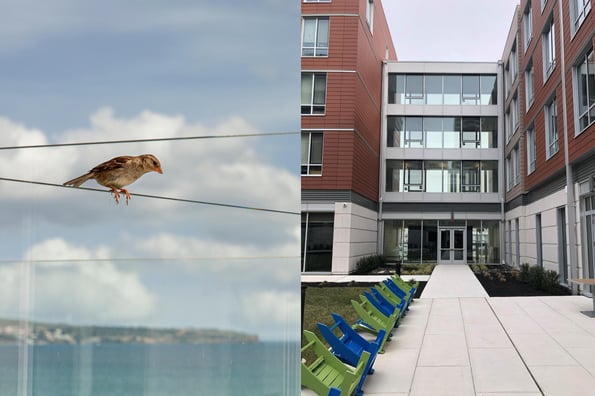
Solution: Prevention Markers (Feather Friendly® Symmetry Pattern in Black)
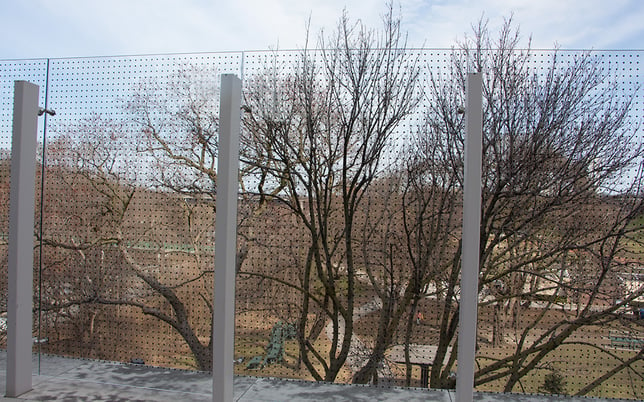
-
Spacing
About: Birds are well known for their incredible flying skills and can fit through small spaces at high speeds. Therefore, spacing is a critical element of effective prevention. If the gap between markers is too large, birds believe they can simply fit and fly through that space. The closer together the spacing, the better the protection for smaller birds like hummingbirds.
Solution: The best level of protection is no less than ¼" (6 mm) markers spaced no more than 2" x 2" (50 mm X 50 mm). We offer a wide range of spacing options and custom designs.
Why This Works: When consistent spacing is applied, the bird can no longer find enough open space to fit through, and it will avoid the area altogether.
Problem: Far Apart Spacing
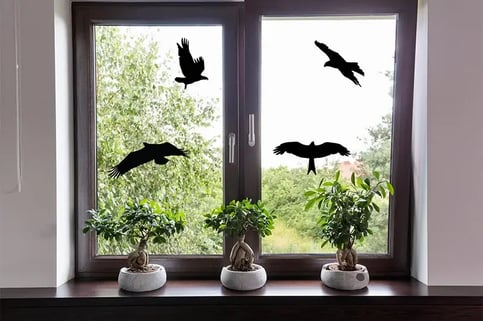
Solution: Close Spacing (Feather Friendly® Sunburst Pattern in Light Grey)
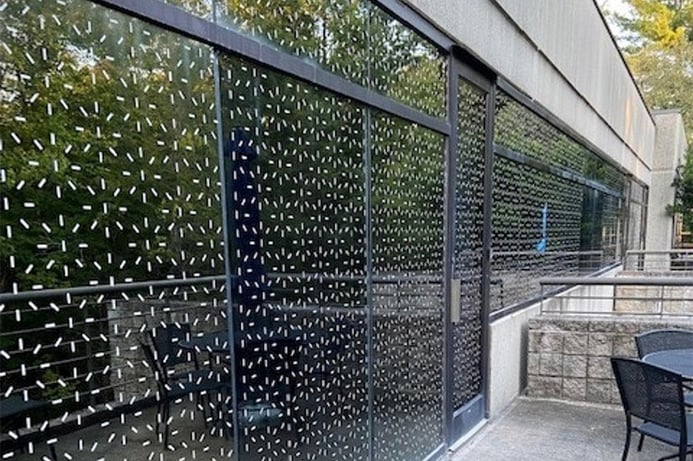
-
Contrast
About: Window markers must be visible under various lighting conditions and have enough contrast against the type of problematic glass you have. Birds should notice the treatment in time to change course before it is too late. For example, a green-coloured marker would disappear on a window reflecting greenery.
Solution: We recommend light grey for reflective glass and black for fly-through zones.
Why This Works: The bird perceives the barrier and much earlier with high contrast treatments.
Solution: High Contrast (Feather Friendly® Symmetry Pattern in Light Grey)
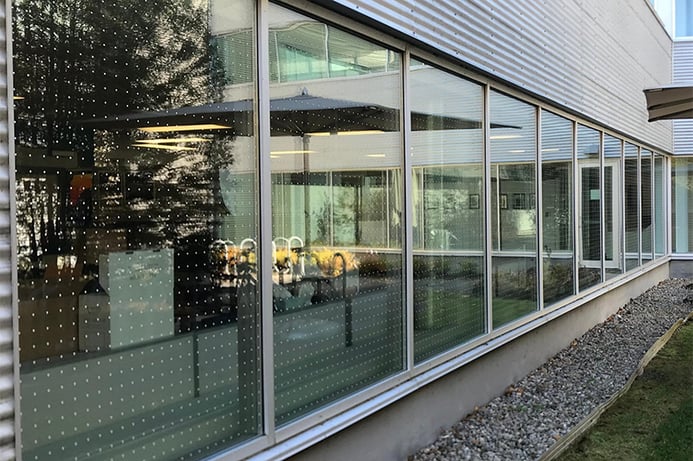
Solution: High Contrast (Feather Friendly® Custom Pattern in Light Grey)
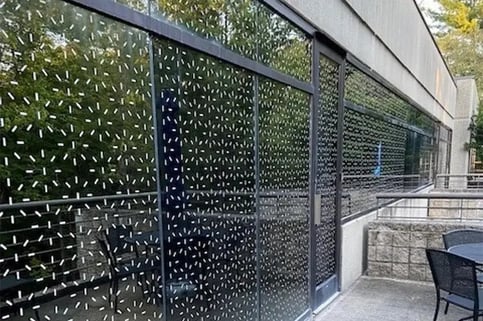
-
Height
About: In some cases, treating the entire building from top to bottom is not always necessary to effectively prevent collisions. Establishing an area of bird activity can sometimes be determined. It's essential to consider the surrounding area (ex., close to a nature reserve, waterways, migratory bird routes), mature tree canopy, and municipal regulations/standards.
Solution: Consider the first 4 to 5 stories of a building or the top of the mature tree canopy, whichever is greater. However, each project is unique and should be analyzed. Therefore, this is a minimum recommendation that may change based on the project.
Why This Works: Treating the areas of a building or home that pose a danger to birds will save species.
Solution: Height Coverage (Feather Friendly® Symmetry Pattern in Light Grey)
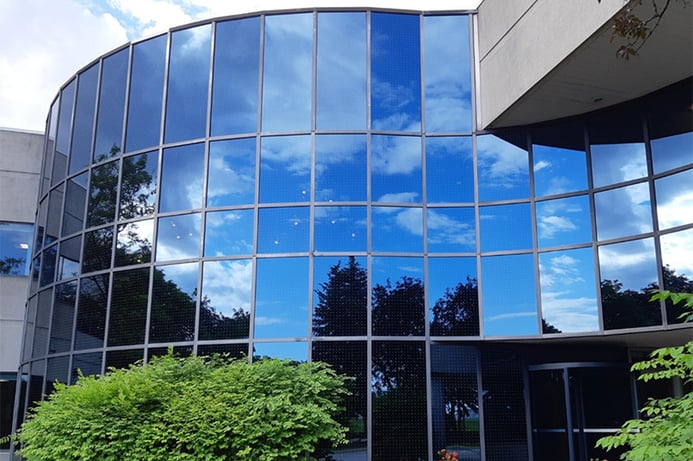
Solution: Height Coverage (Feather Friendly® Harmony Pattern in Light Grey)
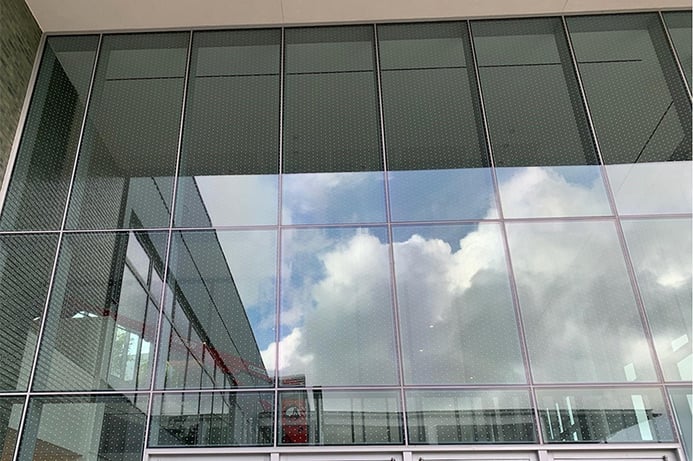
-
Lighting
About: Birds migrate at night to avoid predators and navigate by the stars. Light pollution interrupts this journey, often attracting them to the city, where they become trapped and disoriented in maze-like surroundings. Once drawn into the city, they are more likely to succumb to window collisions.
Solution: Turning off non-essential lights from 11 p.m. to sunrise dramatically reduces this hazard by allowing birds to safely continue their migratory journeys. In addition, extensive data support lights out programs, particularly during the Spring and Fall Migration.
Why This Works: Birds are not led into the areas where the dangers are more plentiful.
Problem: Light Pollution
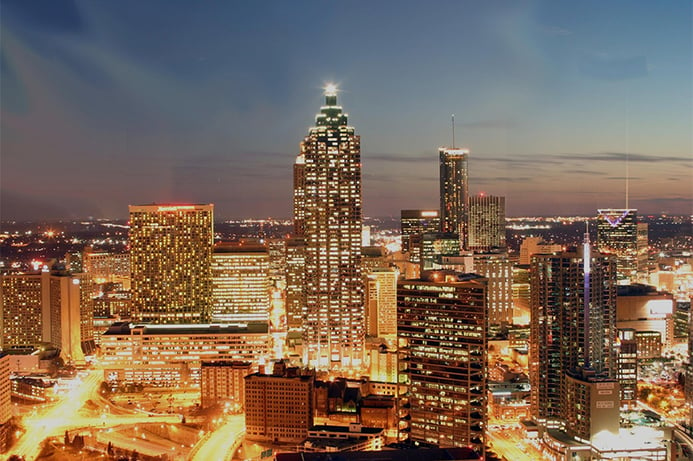
Solution: Turning off lights at night
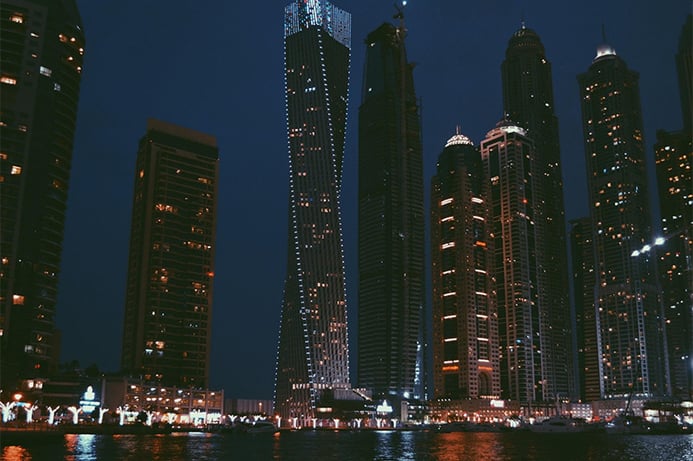
Want to Know More? Extra Factors To Consider That Can Influence The Risk of Collisions
Multiple other factors can influence the threat that glass poses to a bird. These factors can include the following:
Amount of Glass
Several studies have found the amount of glass on the face of a building to be the best predictor of mortality resulting from a bird collision. A 10 percent increase in glass correlated to a 19 percent increase in collisions (or more, depending on the season).
Type of Structure
Different kinds of structures have diverse rates of mortality. High-rise buildings appear to cause the most damage, with an average of 24.3 bird collisions per building. However, low-rise buildings aren't too far behind, with 21.7 birds per structure.
Habitat Surrounding Buildings
Vegetation can attract birds. The more vegetation surrounding a structure, the more likely you will attract birds, increasing the danger of collision.
Aquatic habitats like streams, lakesides, and marshes, are also highly favourable among birds. These habitats are attractive during the day and when birds end their migration stages at night.
The space between two points of vegetation must also be considered. For example, birds fly considerable distances daily to reach viable habitats for food, water and shelter. As a result, they can encounter structures like bus shelters and gazebos, which can be highly unsafe.
Make Your Buildings Safe: Act Against Bird Collisions Today!
Become part of the movement! Together we can change the flight of bird conservation. Connect with us about our commercial product for any large-scale project or our Do-It-Yourself product for any small-scale project. You can also explore our website for more great resources on building standards and bird-safe legislation.
Extra Sources of Information:
CSA Standard: CSA A460:19 | Product | CSA Group
American Bird Conservancy: Glass Collisions: Preventing Bird Window Strikes | ABC (abcbirds.org)
FLAP Canada: www.flap.org https://birdsafe.ca
Dr. Daniel Klem: Daniel Klem Jr. | Muhlenberg College
Partners
We are honoured to form partnerships with organizations who demonstrate
an ongoing commitment to bird conservation.


